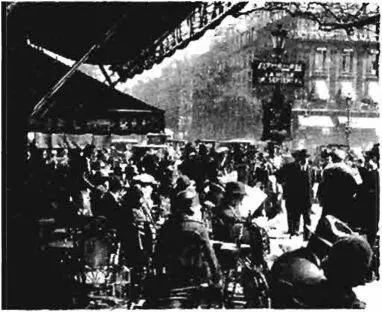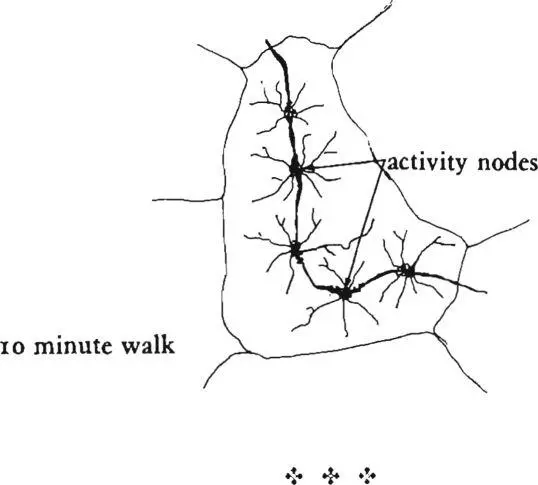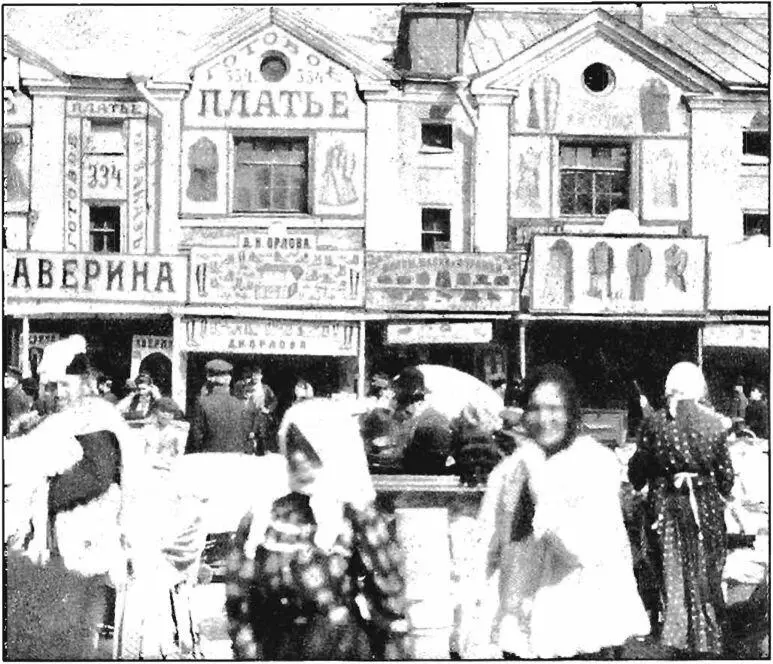Christopher alexander - A pattern language
Здесь есть возможность читать онлайн «Christopher alexander - A pattern language» весь текст электронной книги совершенно бесплатно (целиком полную версию без сокращений). В некоторых случаях можно слушать аудио, скачать через торрент в формате fb2 и присутствует краткое содержание. Жанр: Прочая научная литература, на английском языке. Описание произведения, (предисловие) а так же отзывы посетителей доступны на портале библиотеки ЛибКат.
- Название:A pattern language
- Автор:
- Жанр:
- Год:неизвестен
- ISBN:нет данных
- Рейтинг книги:3 / 5. Голосов: 1
-
Избранное:Добавить в избранное
- Отзывы:
-
Ваша оценка:
- 60
- 1
- 2
- 3
- 4
- 5
A pattern language: краткое содержание, описание и аннотация
Предлагаем к чтению аннотацию, описание, краткое содержание или предисловие (зависит от того, что написал сам автор книги «A pattern language»). Если вы не нашли необходимую информацию о книге — напишите в комментариях, мы постараемся отыскать её.
A pattern language — читать онлайн бесплатно полную книгу (весь текст) целиком
Ниже представлен текст книги, разбитый по страницам. Система сохранения места последней прочитанной страницы, позволяет с удобством читать онлайн бесплатно книгу «A pattern language», без необходимости каждый раз заново искать на чём Вы остановились. Поставьте закладку, и сможете в любой момент перейти на страницу, на которой закончили чтение.
Интервал:
Закладка:
Do not use Use the promenade the promenade
People who live less
than 20 minutes away 13 1
People who live more
than 20 minutes away 3 18
It seems that people, of all cultures, may have a general need for the kind of human mixing which the promenade makes possible; but that if it is too far, the effort to get there simply outweighs the importance of the need. In short, to make sure that all the people in a city can satisfy this need, there must be promenades at frequent intervals.
Exactly how frequent should they be? Racionero establishes 20 minutes as the upper limit, but his survey does not investigate frequency of use. We know that the closer the promenade is, the more often people will use it. We guess that if the promenade is within 10 minutes or less, people will use it often—perhaps even once or twice a week.
The relation between the catch basin of the promenade, and the actual physical paved area of the promenade itself, is extremely critical. We show in pedestrian density(123), that places with less than one person for every 150 to 300 square feet of paved surface, will seem dead and uninviting. It is therefore essential to be certain that the number of people who might, typically, be out strolling on the promenade, is large enough to maintain this pedestrian density along its length. To check this relation, we calculate as follows:
A 10-minute walk amounts to roughly 1500 feet (150 feet per minute), which is probably also about the right length for the promenade itself. This means that the catch basin for a promenade has a shape roughly like this:
| 31 PROMENADE |
|---|
 |
| A promenade and its catch basin. |
This area contains 320 acres. If we assume an average density of 50 people per gross acre, then there are 16,000 people in the area. If one-fifth of this population uses the promenade once a week, for an hour between 6 and 10 p.m., then at any given moment between those hours, there are some 100 people on the promenade. If it is 1500 feet long, at 300 square feet per person, it can therefore be 20 feet wide, at the most, and would be better if it were closer to 10 feet wide. It is feasible, but only just.
We see then, that a promenade 1500 feet long, with the catch basin we have defined and the population density stated, should be able to maintain a lively density of activity, provided that it is not more than about 20 feet wide. We want to emphasize that a promenade will not work unless the ■pedestrian density is high enough , and that a calculation of this kind must always be made to check its feasibility .
The preceding figures arc meant to be illustrative. They establish a rough order of magnitude for promenades and their catch basin populations. But we have also seen successful promenades for populations of 2000 (a fishing village in Peru) ; and we have seen a promenade for 2,000,000 (Las Ramblas in Barcelona). They both work, although they are very different in character. The small one with its catch basin of 2000 works, because the cultural habit of the paseo is so strong there, a higher percentage of the people use it more often, and the density of people on the promenade is less than we would imagine—it is so beautiful that people enjoy it even if it is not so crowded. The large one works as a citywide event. People are willing to drive a long distance to it—they may not come as often, but when they do, it is worth the ride—it is exciting—packed—teeming with people.
We imagine the pattern of promenades in a city to be just as varied—a continuum ranging from small local promenades serv-
TOWNS
ing 2000 people to large intense ones serving the entire city—each different in character and density of action.
Finally, what are the characteristics of a successful promenade? Since people come to see people and to be seen, a promenade must have a high density of pedestrians using it. It must therefore be associated with places that in themselves attract people, for example, clusters of eating places and small shops.
 |
| A 'promenade in Paris. |
Further, even though the real reasons for coming might have to do with seeing people and being seen, people find it easier to take a walk if they have a “destination.” This destination may be real, like a coke shop or cafe, or it may be partly imaginary, “let’s walk round the block.” But the promenade must provide people with a strong goal.
It is also important that people do not have to walk too far between the most important points along the promenade. Informal observation suggests that any point which is more than 150 feet from activity becomes unsavory and unused. In short, good promenades are part of a path through the most active parts of the community; they are suitable as destinations for an evening walk; the walk is not too long, and nowhere on it desolate: no point of the stroll is more than 150 feet from a hub of activity.
A variety of facilities will function as destinations along the promenade: ice cream parlors, coke shops, churches, public gardens, movie houses, bars, volleyball courts. Their potential will depend on the extent to which it is possible to make provisions for people to stay: widening of pedestrian paths, planting of trees, walls to lean against, stairs and benches and niches for sitting,
I 72
opening of street fronts to provide sidewalk cafes, or displays of activities or goods where people might like to linger.
Therefore:
Encourage the gradual formation of a promenade at the heart of every community, linking the main activity nodes, and placed centrally, so that each point in the community is within io minutes’ walk of it. Put main points of attraction at the two ends, to keep a constant movement up and down.

No matter how large the promenade is, there must be enough people coming to it to make it dense with action, and this can be precisely calculated by the formula of pedestrian density(123). The promenade is mainly marked by concentrations of activity along its length— activity nodes(30) ; naturally, some of these will be open at night— night life(33); and somewhere on the promenade there will be a concentration of shops— shopping street(32). It might also be appropriate to include carnival(58) and dancing in the street(63) in very large promenades. The detailed physical character of the promenade is given by pedestrian street (ioo)and path shape(121). . . .
| 32 SHOPPING STREET* | |
|---|---|
 |
ii |
'7 +
. . . this pattern helps to complete the magic of the city (io)and promenade(31). And, each time a shopping street gets built, it will also help to generate the web of shopping(19).
Shopping centers depend on access: they need locations near major traffic arteries. However, the shoppers themselves don’t benefit from traffic: they need quiet, comfort, and convenience, and access from the pedestrian paths in the surrounding area.
Читать дальшеИнтервал:
Закладка:
Похожие книги на «A pattern language»
Представляем Вашему вниманию похожие книги на «A pattern language» списком для выбора. Мы отобрали схожую по названию и смыслу литературу в надежде предоставить читателям больше вариантов отыскать новые, интересные, ещё непрочитанные произведения.
Обсуждение, отзывы о книге «A pattern language» и просто собственные мнения читателей. Оставьте ваши комментарии, напишите, что Вы думаете о произведении, его смысле или главных героях. Укажите что конкретно понравилось, а что нет, и почему Вы так считаете.












